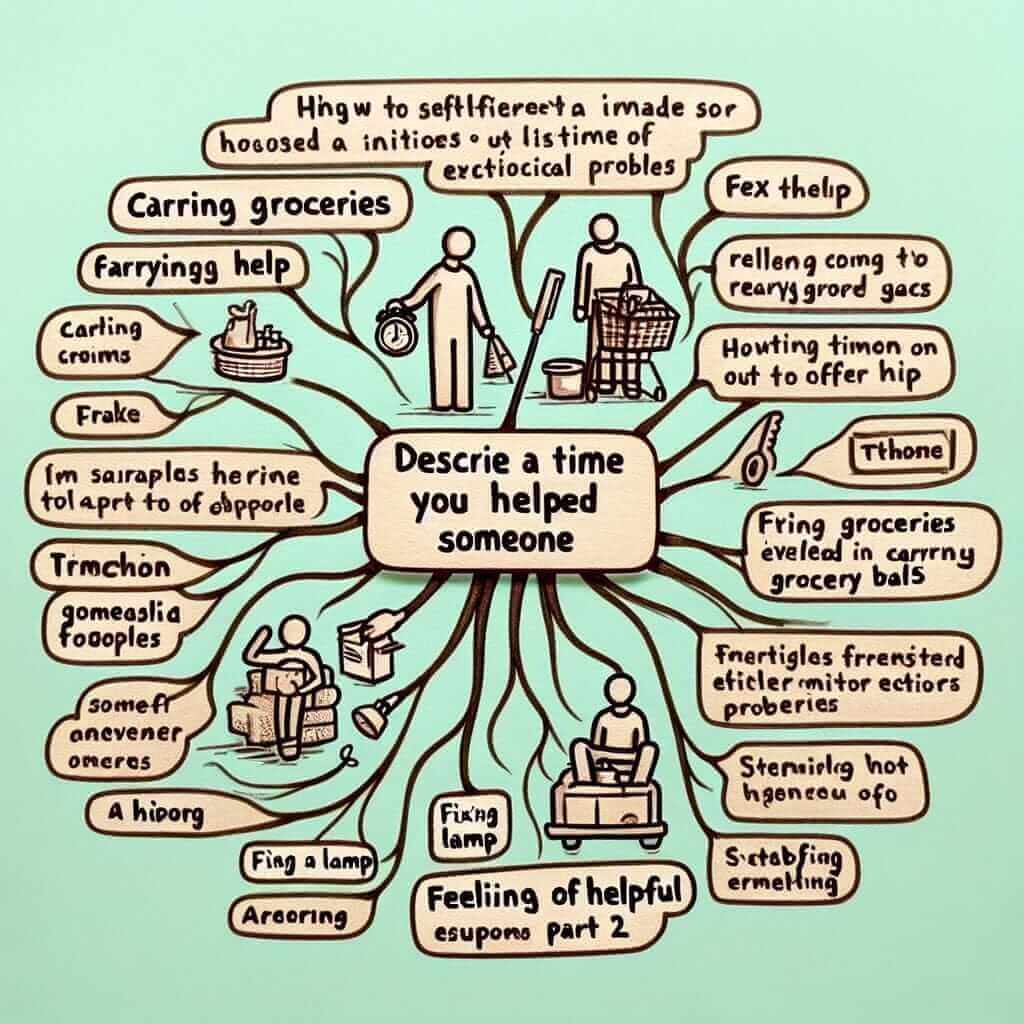As an IELTS instructor with over two decades of experience, I’ve witnessed firsthand the transformative power of effective note-taking in the IELTS Speaking exam, especially in Part 2, the “Long Turn.” This section requires you to deliver a 2-minute monologue on a given topic, and strategic note-taking can be your secret weapon to achieving a high score. This guide delves into the why, how, and what of note-taking for IELTS Speaking Part 2, providing you with the tools and techniques to conquer this crucial section.
Why Note-Taking Matters in IELTS Speaking Part 2
You might be wondering, “Why bother with notes when I have only one minute to prepare?” The answer is simple: note-taking provides a framework, combats nerves, and unlocks fluency.
Benefits of Effective Note-Taking:
- Structure and Organization: Notes provide a roadmap for your response, ensuring you cover all aspects of the cue card prompt.
- Enhanced Fluency: Notes act as memory triggers, reducing hesitations and pauses during your speech.
- Reduced Anxiety: Having organized notes instills confidence and helps you manage exam stress.
How to Take Notes Effectively: A Step-by-Step Guide
Mastering the art of note-taking is about working smarter, not harder. Here’s a breakdown of how to maximize your minute:
1. Deconstruct the Cue Card:
- Identify Keywords: Circle or underline the key themes and instructions on the cue card.
- Brainstorm Ideas: Quickly jot down any relevant experiences, opinions, or examples that come to mind.
2. Employ a Note-Taking System:
- Mind Maps: Ideal for visual learners, mind maps allow you to branch out ideas from a central theme.
- Bullet Points: A clear and concise way to list key points, supporting details, and vocabulary.
- Abbreviations and Symbols: Develop a personal shorthand to save time and space.
3. Prioritize Information:
- Focus on the Prompt: Ensure your notes directly address all aspects of the cue card.
- Sequence Your Thoughts: Use arrows or numbering to establish a logical flow of ideas.
Illustrative Examples from Real IELTS Speaking Tests
Let’s put these strategies into action with a sample cue card:
Describe a time you helped someone.
Using the bullet point method:
- Who: Elderly neighbor, Mrs. Smith
- What: Carried heavy groceries, fixed broken lamp
- How: Felt happy and helpful, Mrs. Smith grateful
- Why important: Community spirit, kindness
Using a mind map:
(Center) Helping Mrs. Smith
- (Branch 1) Carrying Groceries
- (Branch 2) Fixing Lamp
- (Branch 3) Feeling of Helpfulness

Expert Tips for Note-Taking Success
- Practice Makes Perfect: Regularly practice note-taking with past IELTS Speaking Part 2 topics.
- Keep it Concise: Avoid writing full sentences; focus on keywords and phrases.
- Don’t Overly Rely: Your notes are a guide; don’t be afraid to deviate slightly and elaborate.
- Time Yourself: Practice note-taking within the one-minute time limit to simulate exam conditions.
Conclusion
Mastering note-taking for IELTS Speaking Part 2 is a game-changer. By incorporating these strategies, you’ll be equipped to approach this section with enhanced confidence and organization, paving the way for a successful performance. Remember, consistent practice is key to solidifying these techniques and achieving your desired band score.